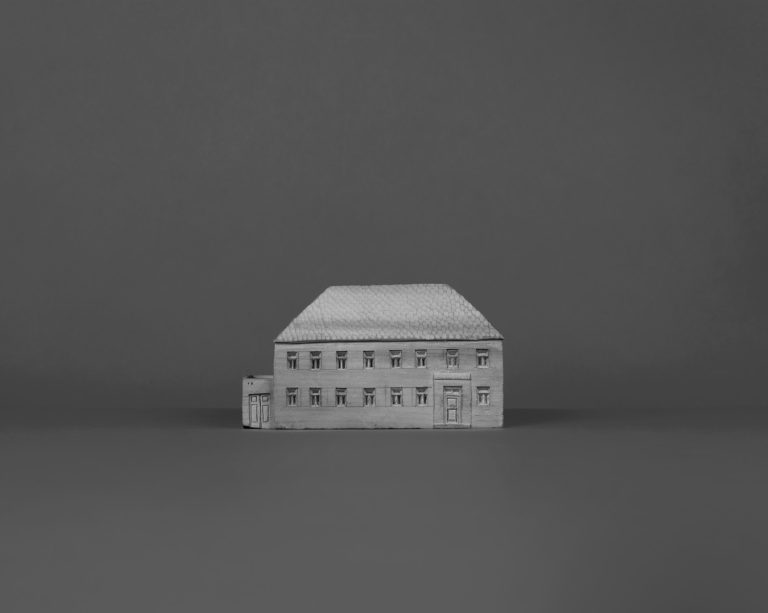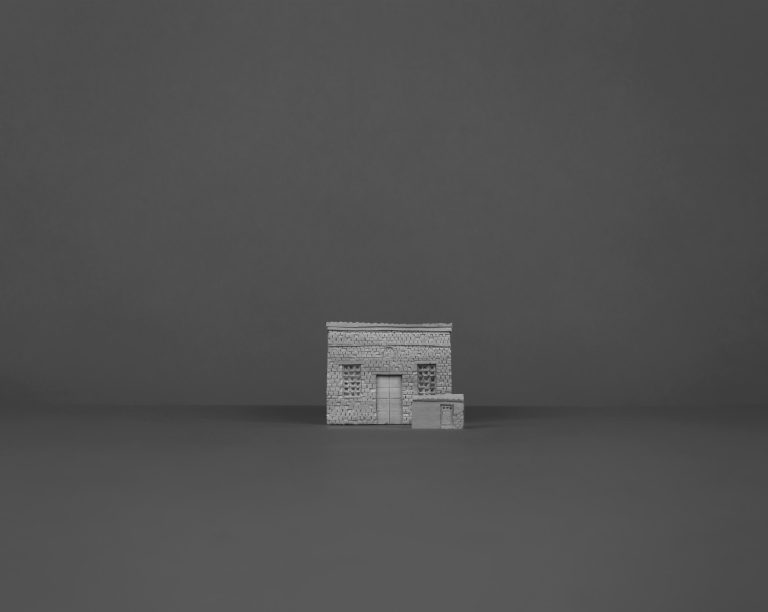Indrė Šerpytytė’s series (1944–1991) Former NKVD–MVD–MGB–KGB Buildings examines the material and psychological remnants of Soviet repression in Lithuania through photography and sculpture. The works portray sites once used by Soviet security agencies for surveillance, interrogation, and imprisonment—ordinary houses repurposed into instruments of control. Under Soviet law, institutions such as the KGB could freely define “anti-state activity,” enabling the arbitrary detention and torture of civilians. Domestic dwellings across towns and villages became silent witnesses to these hidden operations.
Šerpytytė began her project by researching and locating these former interrogation houses. Rather than entering them, she photographed their exteriors in situ, presenting them with a restrained and questioning gaze. Each image reveals a façade that conceals a complex and violent history, inviting viewers to reflect on absence, memory, and the architecture of power.
The exhibition consists of nine notebooks containing these documentary photographs, over 300 hand-carved wooden model houses, and 24 black-and-white still-life photographs depicting the sculptural forms. The wooden models—crafted from her photographs—stand as minimal, ghostly reconstructions of the original buildings. Displayed in systematic rows, they evoke both an archive and a cemetery of memory.
Together, the photographs, notebooks, and sculptures form an installation that layers documentation and imagination. The repetition of forms, the disciplined arrangement of shelves, and the monochrome palette create a rhythm of observation and reflection. Šerpytytė transforms architectural evidence into poetic testimony, exploring how visual representation can both record and reinterpret history. Her work asks viewers to confront the lingering traces of state control and to consider how trauma, surveillance, and silence persist within the fabric of everyday spaces.
Indrė Šerpytytė is a Lithuanian artist living and working in London. Her multidisciplinary practice spans photography, sculpture, installation, and painting, focusing on the impact of war, trauma, and political oppression on memory and perception. Šerpytytė’s work explores how violence and ideology become inscribed within architecture and everyday objects. By transforming historical evidence—such as photographs, archives, and reconstructed buildings—into poetic visual forms, she examines the relationship between documentation and imagination, visibility and absence.Her acclaimed series (1944–1991) Former NKVD–MVD–MGB–KGB Buildings investigates sites of Soviet repression in Lithuania, translating them into haunting photographs and hand-carved wooden models that question how history is recorded and remembered. Šerpytytė’s works are held in major public collections, including the Victoria and Albert Museum, the Roberts Institute of Art, and Derwent London. She has exhibited internationally at Tate Modern, The Museum of Modern Art (MoMA), The Photographers’ Gallery, the Museum of Contemporary Art in Kraków, and Museum Folkwang, among others. Through her practice, Šerpytytė invites viewers to confront the lingering effects of political violence and to reflect on how personal and collective memory shape our understanding of the past.


